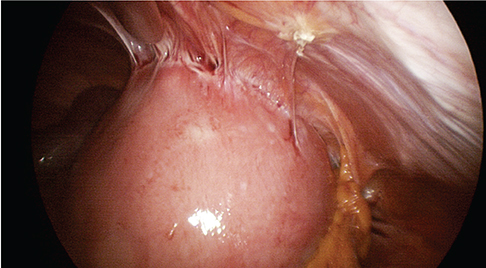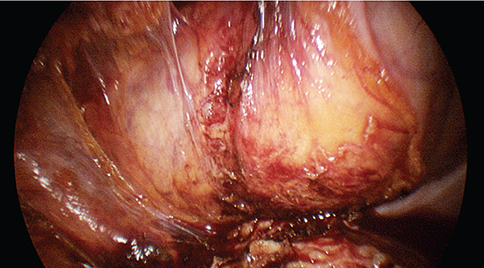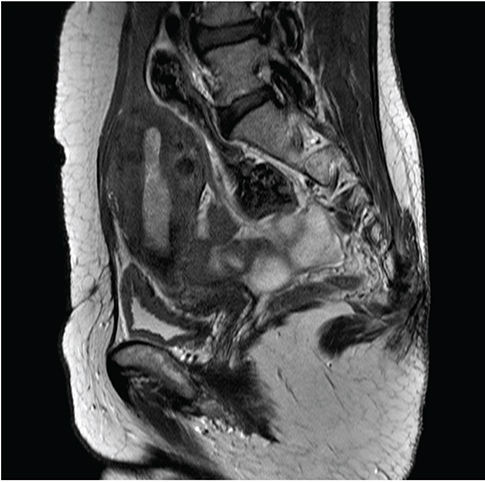Obstet Gynecol Sci.
2015 Nov;58(6):501-506. 10.5468/ogs.2015.58.6.501.
Safety of laparoscopically assisted vaginal hysterectomy for women with anterior wall adherence after cesarean section
- Affiliations
-
- 1Department of Obstetrics and Gynecology, Kangwon National University School of Medicine, Chuncheon, Korea.
- 2Department of Obstetrics and Gynecology, Hanyang University College of Medicine, Seoul, Korea. choiyjjy1@hanyang.ac.kr
- 3Department of Obstetrics and Gynecology, Guro Hospital, Korea University College of Medicine, Seoul, Korea.
- KMID: 2314067
- DOI: http://doi.org/10.5468/ogs.2015.58.6.501
Abstract
OBJECTIVE
To evaluate the safety and surgical outcomes of laparoscopically assisted vaginal hysterectomy (LAVH) for women with anterior wall adherence after cesarean section.
METHODS
We conducted a retrospective study of 328 women with prior cesarean section history who underwent LAVH from March 2003 to July 2013. The subjects were classified into two groups: group A, with anterior wall adherence (n=49); group B, without anterior wall adherence (n=279). We compared the demographic, clinical characteristics, and surgical outcomes of two groups.
RESULTS
The median age and parity of the patients were 46 years (range, 34 to 70 years) and 2 (1 to 6). Patients with anterior wall adherence had longer operating times (175 vs. 130 minutes, P<0.05). There were no significant differences in age, parity, number of cesarean section, body mass index, specimen weight, postoperative change in hemoglobin concentration, or length of hospital stay between the two groups. There was one case from each group who sustained bladder laceration during the vaginal portion of the procedure, both repaired vaginally. There was no conversion to abdominal hysterectomy in either group.
CONCLUSION
LAVH is effective and safe for women with anterior wall adherence after cesarean section.
MeSH Terms
Figure
Reference
-
1. Hamilton BE, Martin JA, Ventura SJ. Births: preliminary data for 2012. Natl Vital Stat Rep. 2013; 62:1–20.2. Health Insurance Review and Assessment Service. 2011 National Health Insurance statistical yearbook. Seoul: Health Insurance Review and Assessment Service;2012.3. Sinha R, Sundaram M, Lakhotia S, Hedge A, Kadam P. Total laparoscopic hysterectomy in women with previous cesarean sections. J Minim Invasive Gynecol. 2010; 17:513–517.4. Chang WC, Hsu WC, Sheu BC, Huang SC, Torng PL, Chang DY. Minimizing bladder injury in laparoscopically assisted vaginal hysterectomy among women with previous cesarean sections. Surg Endosc. 2008; 22:171–176.5. Walid MS, Heaton RL. Total laparoscopic hysterectomy with obliterated anterior cul-de-sac. Ger Med Sci. 2010; 8:Doc03.6. Rooney CM, Crawford AT, Vassallo BJ, Kleeman SD, Karram MM. Is previous cesarean section a risk for incidental cystotomy at the time of hysterectomy? A casecontrolled study. Am J Obstet Gynecol. 2005; 193:2041–2044.7. Pasic R, Levine RL. Laparoscopic suturing and ligation techniques. J Am Assoc Gynecol Laparosc. 1995; 3:67–79.8. Choi JS, Kyung YS, Kim KH, Lee KW, Han JS. The fourtrocar method for performing laparoscopically-assisted vaginal hysterectomy on large uteri. J Minim Invasive Gynecol. 2006; 13:276–280.9. Lyell DJ. Adhesions and perioperative complications of repeat cesarean delivery. Am J Obstet Gynecol. 2011; 205:6 Suppl. S11–S18.10. Szomstein S, Lo Menzo E, Simpfendorfer C, Zundel N, Rosenthal RJ. Laparoscopic lysis of adhesions. World J Surg. 2006; 30:535–540.11. El-Shawarby SA, Salim R, Lavery S, Saridogan E. Uterine adherence to anterior abdominal wall after caesarean section. BJOG. 2011; 118:1133–1135.12. Hirschelmann A, Tchartchian G, Wallwiener M, Hackethal A, De Wilde RL. A review of the problematic adhesion prophylaxis in gynaecological surgery. Arch Gynecol Obstet. 2012; 285:1089–1097.13. Sheth SS, Goyal MV, Shah N. Uterocervical displacement following adhesions after caesarean section. J Gynecol Surg. 2009; 13:143–147.14. Sheth SS, Shah NM, Varaiya D. A sonographic and clinical sign to detect specific adhesions following caesarean section. J Gynecol Surg. 2008; 24:27–36.15. Walid MS, Heaton RL. Uterine peaking: sonographic sign of vesico-uterine adhesion. Ger Med Sci. 2011; 9:Doc24.16. Chang FH, Lee CL, Soong YK. Use of palmer's point for insertion of the operative laparoscope in patients with severe pelvic adhesions: experience of seventeen cases. J Am Assoc Gynecol Laparosc. 1994; 1(4, Part 2):S7.17. O'Hanlan KA. Cystosufflation to prevent bladder injury. J Minim Invasive Gynecol. 2009; 16:195–197.
- Full Text Links
- Actions
-
Cited
- CITED
-
- Close
- Share
- Similar articles
-
- A case of ovarian endometriosis after laparoscopically assisted vaginal hysterectomy
- Comparison of Total Laparoscopic Hysterectomy with Laparoscopic-Assisted Vaginal Hysterectomy and Total Abdominal Hysterectomy
- Laparoscopically assisted vaginal hysterectomy using 3-trocar method through the previous operation scar for large uterus weighing 300 g or more
- Two Cases of Extrapelvic endometriosis following Laparoscopy-assisted vaginal hysterectomy and Cesarean section
- Two Cases of Vesicouterine Fistula after Delivery in Women with Previous Cesarean Section




